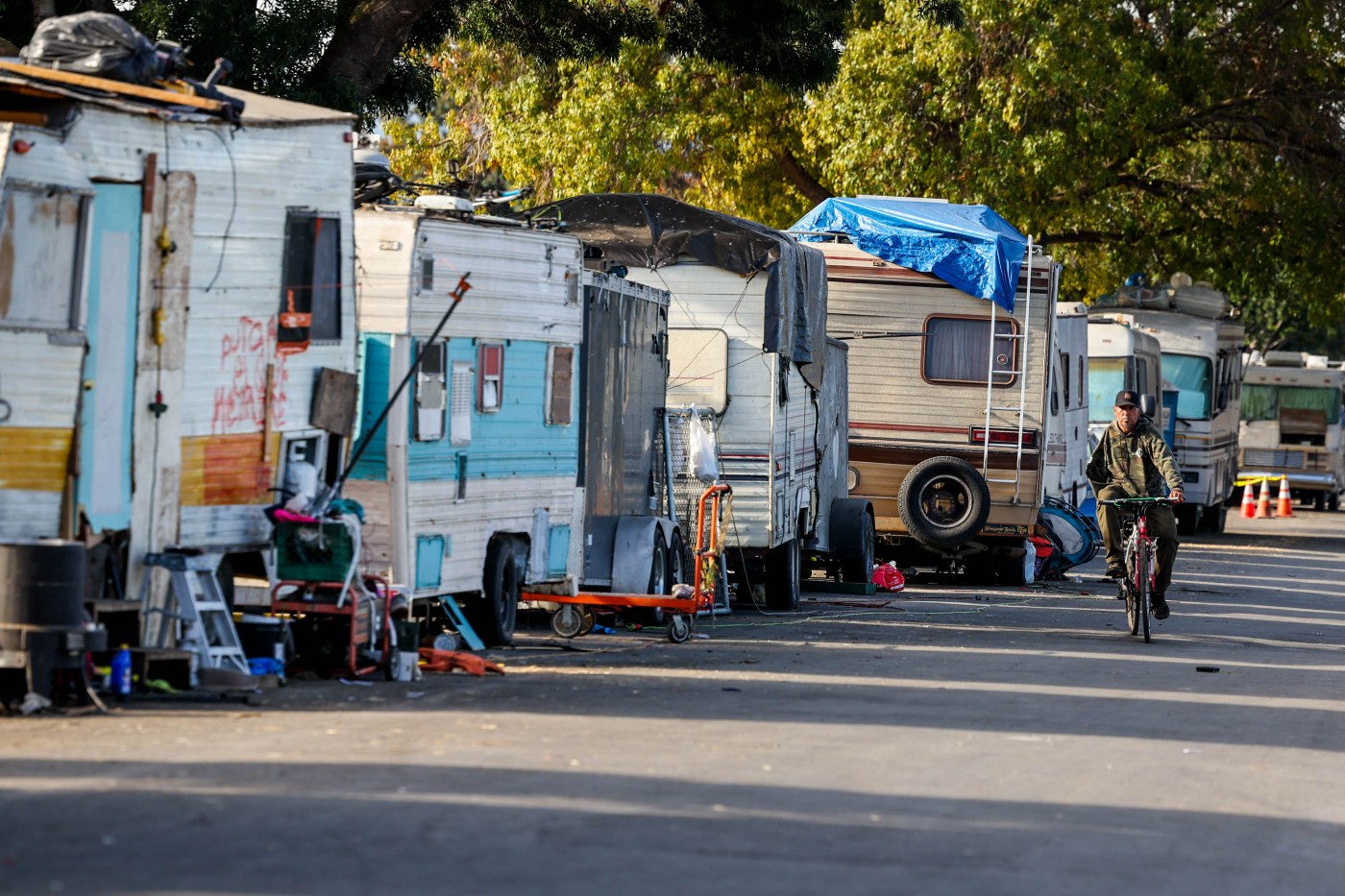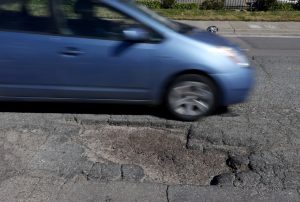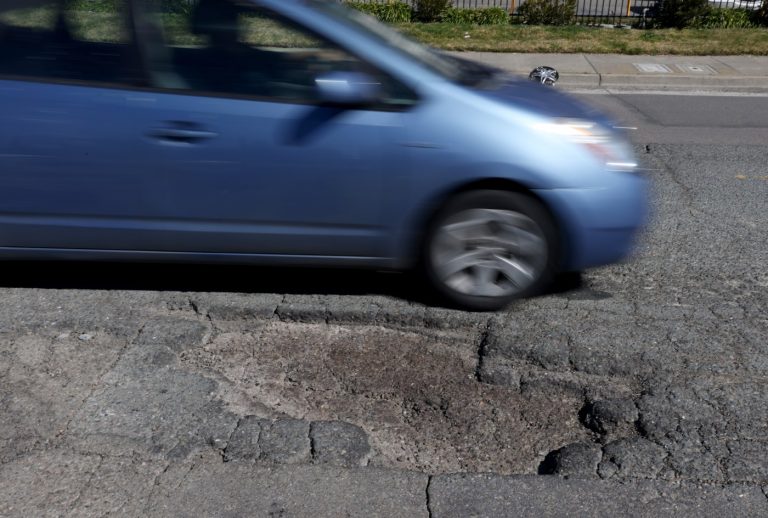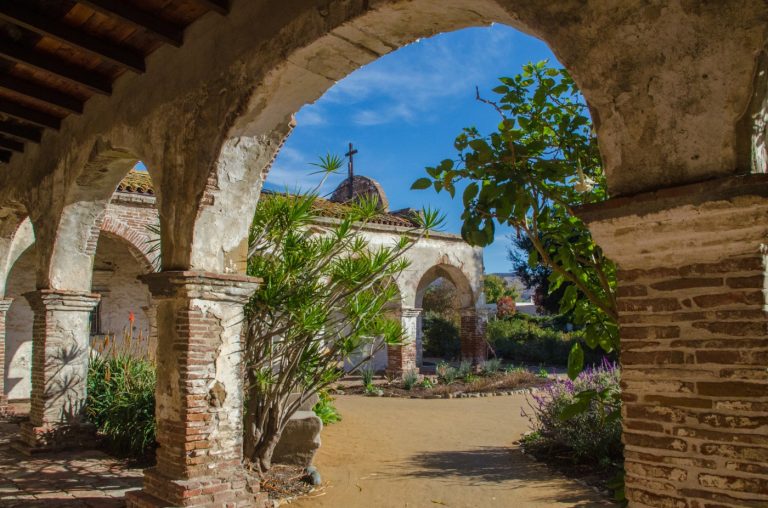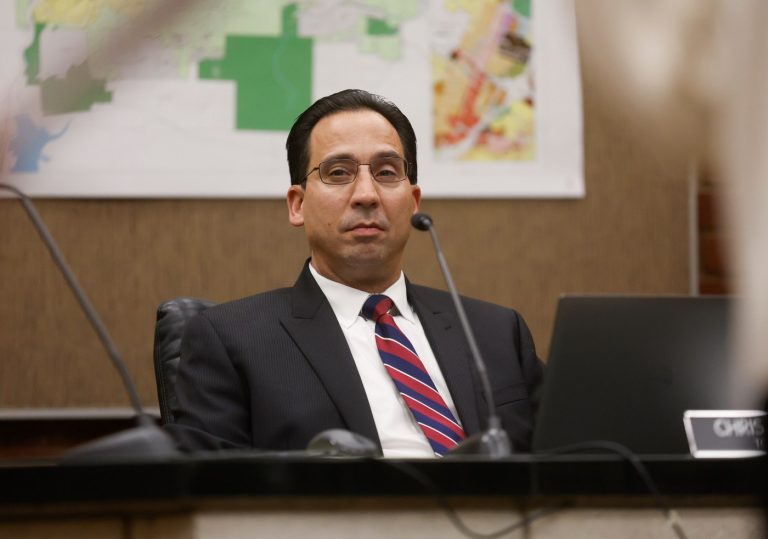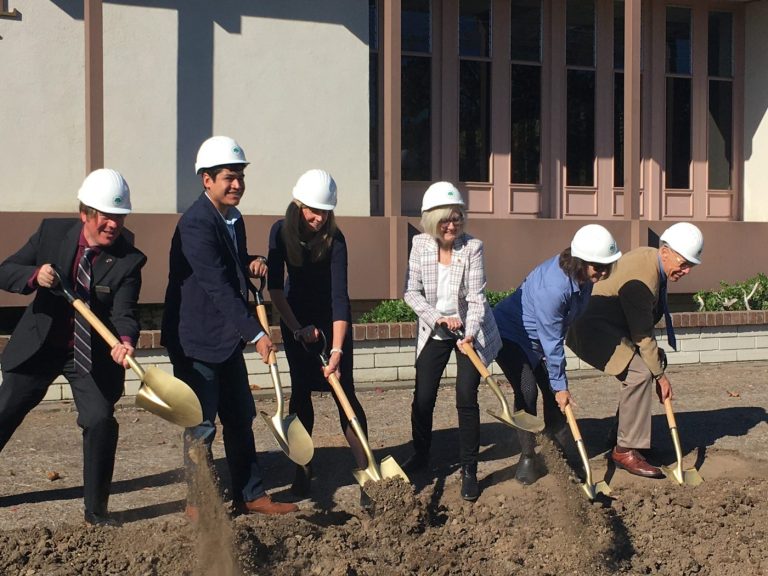The Bay Area’s homeless population grew 6% to an estimated 38,891 people in 2024, according to new federal data, extending a decade-long surge fueled by the housing affordability crisis, and drug and mental health challenges among those living on the region’s streets.
In California, homelessness rose 3% to more than 187,000, while the U.S. homeless population spiked 18% to more than 770,000 from 2023 to 2024. All three totals are record highs.
Gov. Gavin Newsom credited the state’s slower rise last year to the unprecedented billions of dollars it has sent to cities and counties to fund homelessness programs.
“Forty states saw larger increases than California,” Newsom said at a news conference in Oakland last month. “We’re making progress, but we have to continue to do more.”
California Republicans, however, scoffed at the suggestion the state is trending better on homelessness. Almost a quarter of all homeless people nationwide live in the state, despite Californians making up just 11% of the total U.S. population. Since Newsom took office, California’s homeless population has swelled 16%, though last year’s bump was the smallest under his watch.
“Newsom’s attempt to claim victory on homelessness is a bold move for someone eyeing the presidency,” California Senate Minority Leader Brian Jones, a Republican from San Diego, wrote on the social media platform X. “He should be ashamed of what he’s done to our state, but instead, his pride blinds him.”
Federal officials attributed the steep nationwide increase in large part to a wave of migration at the southern border. Many of the states that saw the biggest jumps in homelessness, including New York, Illinois and Massachusetts, also saw the largest recent influxes of hundreds of thousands of migrants seeking asylum. Unlike in California, many big cities in those cold weather states are legally required to provide beds for people needing shelter, and some local officials and migration experts have suggested that has made them an attractive destination for migrants.
Last year, homelessness increased by 116% in Illinois, 53% in New York and Massachusetts, but just 2% in the large Sun Belt states of Texas and Florida.
While the migrant crisis may have had less of an impact in the Bay Area, experts and advocates say homelessness will persist here and across the country until communities can better manage their drug and mental health challenges and, importantly, add more affordable homes while easing the burden of rising housing costs on low-income residents.
“Our leaders must immediately expand the resources to rehouse people without homes and assist the rapidly growing number of people who cannot afford skyrocketing rents,” said Ann Oliva, chief executive of the National Alliance to End Homelessness, in a statement.
Most counties nationwide counted their homeless populations in January 2024 — meaning the estimates are no longer up to date — before sending the results to the federal government. In the Bay Area, homelessness increased by 20% in Contra Costa County, 15% in San Mateo County, and 10% in San Francisco, while declining by 3% in Alameda County, according to federal data.
In Santa Clara County, homelessness grew by 5% to 10,394, the largest total of the nine Bay Area counties. However, in 2023, the last year the county took a full homeless census, local officials reported a 1% decline. For years that a county doesn’t do a count, the federal government’s estimate is based on the most recent tally and the number of people in shelters.
Across the Bay Area, as with the state as a whole, about two-thirds of homeless residents live on the street, while the rest stay in shelters.
Even as the region avoided an explosion in homelessness last year, the estimates, while widely considered an undercount, show the Bay Area’s homeless population has skyrocketed by 46% over the past decade.
The surge coincided with a more than 20% increase in the region’s median rent, which now tops $3,000 a month, according to Zillow data.
During most of that period, lower-income workers at the highest risk of homelessness saw their earnings stagnate. And even as wages began to rise in 2020, the region’s homeless population continued to climb as the pandemic led to widespread job losses and cut off many people from mental health care. Meanwhile, a fentanyl epidemic devastated countless lives.
Since 2015, every Bay Area county except Sonoma and Marin has seen homelessness increase. The largest spike by far came in Alameda County, where the number of homeless people more than doubled to 9,450.
The surge in Alameda was due to rising rents in areas of deep poverty that have long suffered from underinvestment and historic housing discrimination, said Jonathan Russell, director of housing and homelessness for Alameda County’s health department.
“Alameda County is a vivid picture of that structural problem,” he said.
In response, officials across the county have worked to add shelter space and boost rental assistance, Russell said. He cited those efforts for a dip in the county’s homeless population last year, though homelessness in Oakland still climbed 9%, to an estimated 5,490 people.
Oakland now has the highest per-capita homelessness rate of the Bay Area’s three major cities, with 1,258 out of every 100,000 residents lacking a permanent roof over their heads. San Francisco’s homelessness rate is 1,028 per 100,000 residents, with a homeless population of 8,323. San Jose’s homelessness rate is 654 per 100,000, with 6,340 unhoused residents.
China Richardson, 47, lives at the homeless encampment at Mosswood Park in Oakland, Calif., on Tuesday, Dec. 3, 2024. (Jane Tyska/Bay Area News Group)
For China Richardson, who’s spent most of the past four years living in an encampment at Oakland’s Mosswood Park, local officials’ multiple attempts to help her out of homelessness have failed.
Richardson, 47, said officials paid for a nine-month stay at a motel and also tried moving her to a tiny home shelter. Hunched over a well-worn wooden cane, Richardson — who became homeless around 2014 after her mother died and she couldn’t afford rent on her own — explained she gave up the tiny home shelter because of an altercation with a roommate. She was unsure why officials stopped paying for the motel room.
“You get housing, and you end up right back outside,” she said.
Last year, a scathing state audit called into question the effectiveness of homeless housing and shelter programs across California, finding state officials had failed to appropriately track $24 billion in homelessness spending between 2019 and 2023.
An accompanying audit singled out San Jose, finding that the city lacked clear goals for its homelessness programs and had not closely monitored the nonprofits contracted to operate them.
San Jose officials disputed some of the findings of the California State Auditor report, pointing to a countywide effort that in 2023 helped move 2,500 homeless households into permanent housing. Yet, underscoring the magnitude of the challenge, almost twice as many became homeless that year.
In November, however, Santa Clara County announced that officials are now housing more homeless veterans than the number becoming homeless. Dedicated resources available to veterans, including targeted rental assistance, have made all the difference, said Kelly Vasquez, chief programs officer with South Bay homeless nonprofit HomeFirst.
Vasquez urged officials to provide similar levels of support for other segments of the homeless population.
“It’s not only possible for veterans,” Vasquez said. “It’s possible for everybody.”
